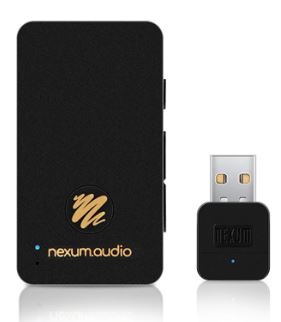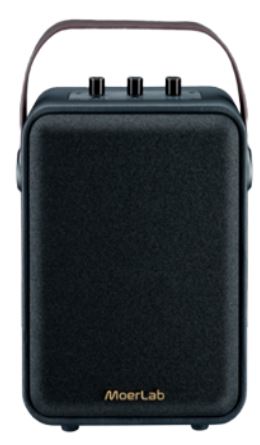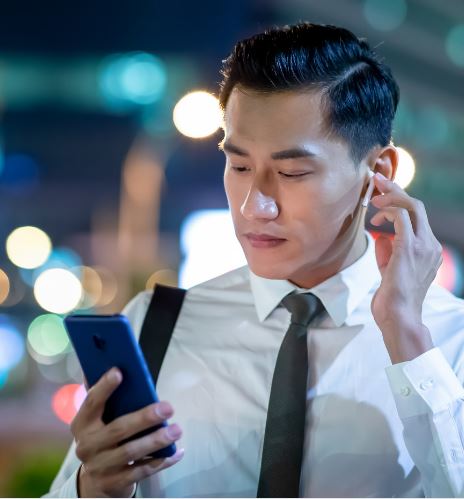By Stephen O. Frazier
There’s a popular misquote of Mark Twain where he reportedly said, “Reports of my death are greatly exaggerated.” He was alive and well and visiting Paris. In a similar vein there is hearsay of the early demise of hearing loops, the most popular assistive listening technology for people with hearing loss.
Rather than being exaggerated, those rumors are simply inaccurate according to a variety of experts familiar with both technologies.
Last June the Royal National Institute for the Deaf (RNID) in the UK reported, “It will take a long time to move from existing systems to new technology. It is therefore important that existing technology like loop systems continue to be used to provide vital communication support for those who need it.” Other experts define that “long time” as at least ten years before most hearing aids would be Auracast capable and most “places of assembly” were fitted with Auracast transmitters. Android Authority, a tracker of Android application, says of Auracast, “We’re likely still years rather than months away from mass adoption.”

While Auracast technology holds some exciting possibilities, realistically the widespread adoption and regular use is likely still years away.
Another misconception or misperception is that Auracast is a technology developed for the hard of hearing. Worldwide hearing aid sales were just under 19 million units in 2021 whereas wireless earbuds sales alone numbered 300 million pairs (600 million units). Worldwide smartphone sales in 2021 were 1.43 billion according to statista.com, making hearing aid sales minuscule in comparison.
EHIMA, the European Hearing Instrument Manufacturers Association, did encourage SIG, the developers of Bluetooth, to come up with a technology that would serve multiple recipients with the touch of a button (just as hearing loops and telecoils do) but it is the billions of smartphone users, players of digital music, and users of other digital sound producing devices that are the real target Auracast is aiming for. Those targets will probably have taken many hits before it will be common for most wearers of hearing aids to hear the day’s sermon connected to an Auracast broadcast in the church down on the corner or the Sound of Music radiating from the stage at the local performing arts center.
All of that being said, where do things stand with Auracast? Last June the RNID also reported, “… new Auracast™ products including hearing aids and cochlear implants to then start coming into the market in early 2023.” That has not happened.
Cochlear claims their new Nucleus 8 processor is Auracast capable but admit they have not yet developed the software to use that capability. When asked, Starkey won’t say whether their new, from the ground up, Genesis AI range of hearing aids is ready for Auracast and news in regard to Auracast from the major makers of hearables like Sony, Samsung or Apple is written in the future tense.
Auracast devices available for purchase
 That doesn’t mean Auracast products have not been introduced. Under the radar of most consumers, there are firms developing and marketing SIG approved Auracast products.
That doesn’t mean Auracast products have not been introduced. Under the radar of most consumers, there are firms developing and marketing SIG approved Auracast products.
Here are just a few of them, mostly in the island nation of Taiwan. There, Nexum began making and shipping their VOCE transceiver over a year ago, and these multi-purpose Auracast certified transmitters/receivers are easily available from Amazon. Also based in Taiwan, Moor Technology offers a dongle and a transceiver that duplicates the capabilities of the Nexum VOCE.
 It will transmit and receive sound in either the classic one-to-one Bluetooth mode or in the new LE Auracast multiple user mode. The dongle can be used to transmit sound from a PA system to any number of wired earphones, earbuds, neckloops etc. plugged into an equal number of these Moor devices in receiver mode, or connect to multiple Auracast capable loudspeakers also now available from Moor. Properly configured and set up for use as an ALS, these devices could meet the ADA criteria to qualify as a compliant system.
It will transmit and receive sound in either the classic one-to-one Bluetooth mode or in the new LE Auracast multiple user mode. The dongle can be used to transmit sound from a PA system to any number of wired earphones, earbuds, neckloops etc. plugged into an equal number of these Moor devices in receiver mode, or connect to multiple Auracast capable loudspeakers also now available from Moor. Properly configured and set up for use as an ALS, these devices could meet the ADA criteria to qualify as a compliant system.
Again from Taiwan comes news that Airoha Technology now offers a series of Bluetooth audio chips that bear the sign of approval from the Bluetooth SIG for Low Energy Audio and are available to manufacturers. These new chips are suitable for running artificial intelligence algorithms and customizable for use in true wireless stereo (TWS), headphones, loudspeakers and assistive listening devices. A second low power series supports the latest LE Audio and Bluetooth 5.3 system which is suitable for headphones, TWS, speakers and Bluetooth transmitters.
Other Auracast developments

Reports say LE Audio is coming to Android 13
Android Authority reports that LE Audio is integrated into Android 13 indicating that they anticipate that Google will build scanning for QR codes into future versions of Android for easy connectivity to multi-channel Auracast broadcasts. This could happen soon.
Bluetooth SIG claims that Auracast headphones and smartphones can be expected to be available before the end of this year. If and when this occurs, the purchase of new earbuds could become a normal supplemental purchase for buyers of a new Auracast smartphones as the old ones probably won’t work with those phones. However, as was pointed out in Audio Express recently, it will be possible to upgrade some newer higher end devices such as smartphones to use Auracast. Additionally, to enable audio sharing with older Bluetooth Classic devices, it will likely also possible, when available, to use an Auracast bridge with a classic Bluetooth receiver on one side and an Auracast transmitter on the other.
Demonstrations by Bluetooth SIG at various conventions and A/V shows have shown how Auracast meets many needs that hearing loops cannot. At this year’s Mobile World Congress in February, Bluetooth SIG demonstrated a variety of applications such as subscribing to gate information at an airport, connecting to the audio stream for the speaker at a convention, skipping between TV streams in a sports bar to follow all of the games.
Auracast is just in its infancy and estimates of the timeframe of a worldwide transition from analog to a digital audio streaming vary dramatically.
The need for adequate communication access during that transition means classic Bluetooth, hearing loops and other means of relaying sound will continue to exist and be met even as change is taking place.
**Interested to learn more about Auracast technology? Check out this excellent interview with Nick Hunn discussing Auracast**
About the Author
Stephen O. Frazier is a freelance writer and the former New Mexico HLAA Chapter Coordinator. He was trained by HLAA as a hearing loss support specialist, maintains the Loop New Mexico initiative, co-chairs the Committee for Communication Access in New Mexico, and was one of the founding members of the national HLAA Get in the Hearing Loop Task Force. His articles have run in many publications including the audio/visual magazine Sound & Communications, Advance for Audiologists, the Christian Science Monitor, Church Executive, Hearing Review, Hearing Health and many others. Those articles can be read at www.sofnabq.com







